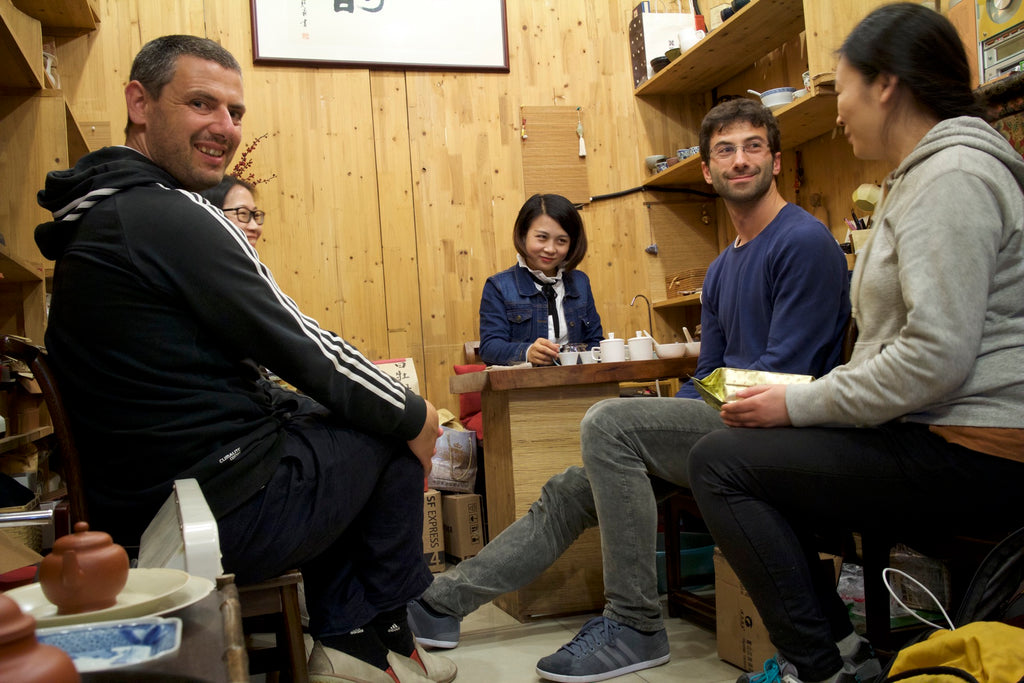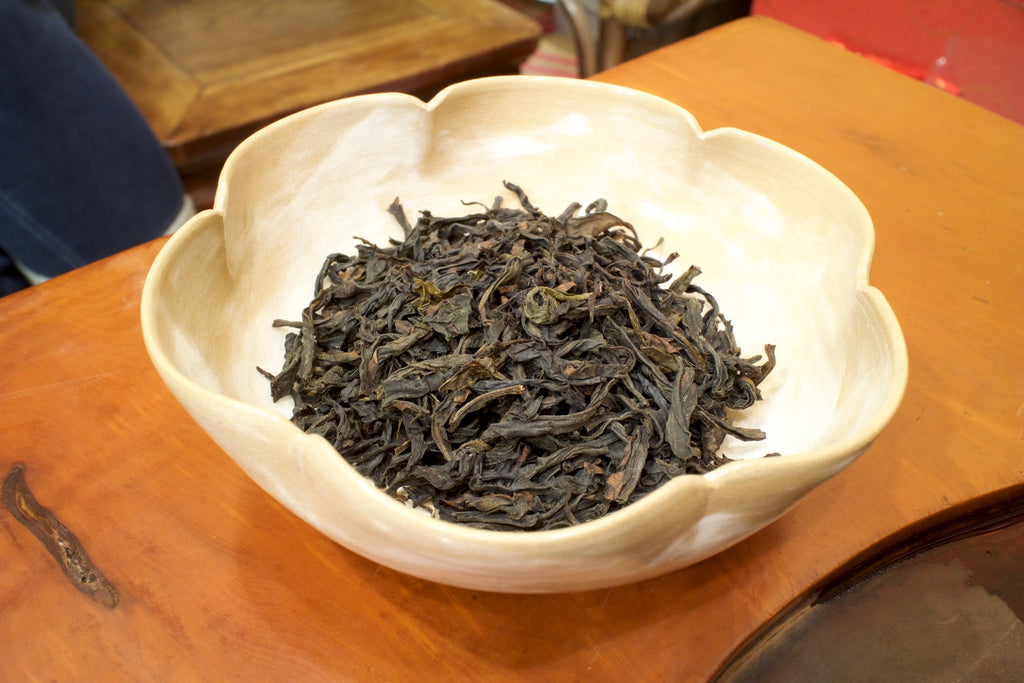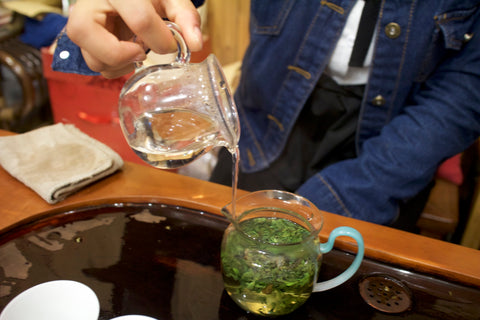Tea tasting in Shanghai
Shanghai 22nd April
7am local time, 1am European time. Landing on time. Once again in Shanghai.
I was here just three months ago and was already missing the Chinese mess. China should definitely be mentioned in the synonyms and antonyms dictionary as opposite to Switzerland!
I rush from the airport to the other side of the city to meet some friends in a familiar tea shop. Some of our suppliers already sent samples to Shanghai that I am eager to taste.


First tea tasting in Shanghai - some suppliers sent samples in advance of my arrival.
We start with oolong teas from the Wuyi Mountain. It would be better to taste lighter green teas first, but I am too curious to try the organic Wuyi Rock Teas from a recently discovered farm; Organic Rock Tea is so rare! It took long time to find a factory producing it.
Rougui is very floral and lingering; Da Hong Pao is slightly more roasted, but still aromatic; fuller than Rougui. Lao Cong Shui Xian, a tea from old tea plants, is on the contrary a bit disappointing. Lao Cong (old bush) teas usually have a characteristic taste that distinguishes them from younger bushes. Maybe this Lao Cong is not as Lao as they pretend it to be…

Wuyi Rock tea - Rougui - slightly roasted and floral. Approved!
We move on tasting two green teas from Huoshan, a mountain in the north Anhui province. They are also produced by an organic tea factory specialized in Huoshan Huang Ya, a yellow tea. Most Huoshan Huang Ya on the market, actually almost all, are nowadays produced as green tea; “yellow” being present only in the name (huang). The production of yellow tea is very complex and risky. The farmers can sell very well also green tea so they have no reason to do more effort in producing yellow tea. Our supplier however still keeps part of the crop for yellow tea; its production will start at the end of April and he will send us samples to taste.
The green teas are already very promising and their price reasonable. Lu’an Gua Pian, a green tea made with relatively large leaves, without buds, is a delight. It is not as delicate and light as most early spring green teas; it has its own character. Full, mineral and refreshing.
After the greens we brew three black teas from Tanyang, a mountain village in the north of Fujian. Our supplier sent also a wild tanyang gongfu. A wild tea is produced with leaves of naturally grown bushes. Bushes that grow in the forest or on the side of cultivated fields and are neither prune nor treated in any way; just left grown naturally. There are few wild bushes, spread over a wide area; so the price is high; too high unfortunately. I will not buy it.


Carefully brewing Lu'an Gua Pian (left) and comparison between classic and wild Tanyang Gongfu (right).





